The British state convicted Thomas Mair of the murder of Labour MP Jo Cox at The Old Bailey on 23/11/2016. At the time, many people were uneasy both about the way the case had been handled and the apparent contradictions and gaps in the evidence. However, recent research by the independent investigative journalist and film maker Richard D Hall has cast much firmer doubt upon the safety of Thomas Mair’s conviction.
Hall’s film ‘Exit from Bexit: The Jo Cox Departure,’ takes a dispassionate look at the evidence offered by the state to put Thomas Mair behind bars. I recommend that all who care about justice watch his film and consider his arguments.
His work has been met, unsurprisingly, by allegations that he is a supporter of the ‘far right.’ Anyone familiar with Hall’s longstanding commitment to evidence based investigations will know how silly this unsubstantiated slur is. For those who have yet to visit his website or watch his channels, I suggest you do before you believe this preposterous allegation.
Once you’ve considered Hall’s film, and additional evidence offered here, you might ask the same about the ‘far right’ claims heaped upon Thomas Mair.
There is absolutely nothing wrong with debating or questioning the evidence he offers. Hall himself always reminds his viewers to “believe none of what you hear and only half of what you see.” He consistently advocates critical thinking and encourages questioning. So please watch his film and read this post with a critical eye.
The Official Narrative:
Jo Cox was the elected Labour Party MP for Batley and Spen, winning the seat in the 2015 UK general election. On Thursday 16th of June 2016 Cox (41) was due to attend her constituency surgery at the Library in the market town of Birstall, West Yorkshire. She arrived in a silver Vauxhall Astra outside Birstall Library in Market Street at 12.52 (gmt.) Her assistants Sandra Major and Fazila Aswat (driving) were with her. As the three got out of the vehicle a man, said to be Thomas Mair, approached and shot Jo Cox with a home adapted, sawn off .22 calibre, bolt action rifle.

The murder allegedly took place between two parked vehicles. The Silver Astra and a red car parked in front. The man then stabbed Jo Cox multiple times with a large dagger, before stepping back, apparently to reload the rifle, and then stepping forward again to shoot the prone Jo Cox for a second, possibly third time. Despite CCTV coverage outside the Library, no CCTV footage of the murder has been released to the public. Which is understandable.
However, at least 15 witnesses gave statements which were consistent. They each described an older man, with a greying goatee beard, wearing a White baseball cap and dark blue suit/sports jacket carrying out the attack. None of the witnesses knew Thomas Mair and therefore could not positively identify him at the scene.
Sandra Major stated that during the attack Cox shouted to her and Fazila Aswat to “get away……..don’t let him hurt you, let him hurt me.” Astonishing bravery and composure during a frenzied attack. Fazila Aswat stated she urged Jo Cox to think of her two children and get up. According to Aswat, Jo Cox continued her conversation with the two women, during the attack, saying to Aswat “Fazila I can’t move, I’m hurt.” Aswat then states that she heard the attacker calmly say “that’s for Britain First, Britain will always be first, Britain First.”
The man, said to be Thomas Mair, wearing the dark blue suit jacket and white baseball cap, then calmly walked away from the scene of the murder. Many eye witnesses attested to the man’s cool, calm and collected manner throughout the attack.

At this point Jo Cox was still alive. According to Jo Cox widow Brendan Cox, Fazila Aswat, rather than call the 999 emergency line for an ambulance, called a police detective Chief Inspector instead. Witnesses said arriving police separated Sandra Major and Fazila Aswat by ushering Major behind a police cordon while allowing Aswat to stay closer to the crime scene.
Contrary to some witness statements, setting the ambulance arrival closer to 13.20, the official narrative records the Ambulance and police arrival at 13.01. Jo Cox was pronounced dead by a doctor, in attendance with paramedics, at the scene, at 13.48. It isn’t clear why Jo Cox wasn’t taken to hospital, approximately 10 minutes away, while she was still alive. Presumably, the nature of her injuries precluded this. There was no other explanation.

The Pursuit & Capture of Thomas Mair.
Hall states that he spoke to two witnesses, named neighbours of Thomas Mair, who stated they saw him leave his home at about 11.40 on the morning of the 16th. Both witnesses stated that Thomas Mair was not wearing a suit/sports jacket when he left his house.
A man wearing a white baseball cap and a dark blue suit/sports jacket, walking with a pigeon toed gait and a noticeable limp, was caught on CCTV in Lowood Lane shortly before the attack. The Police stated this was Thomas Mair.
This same man was captured on numerous CCTV cameras in the town that morning. The man was recorded wearing the blue suit jacket, a white baseball cap, carrying a dark holdall bag. He was captured on CCTV repeatedly crossing Chapel Lane between Birstall market place and the northern end of Market Street. CCTV showed him apparently waiting outside a shop called the Vape Lounge on Market Street, approximately 30 meters from the Library. He was clearly wearing brown shoes and had relatively small feet.
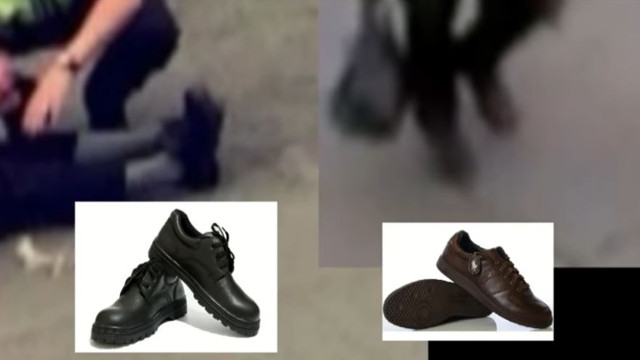
Jo Cox’s car was seen on CCTV entering the southern end of Market street at 12.51. The CCTV footage showing the attack has obviously been withheld by Police. Following the attack, at 12.53, the man with the suit jacket, white baseball cap, small brown shoes and pigeon toed gait, was captured on CCTV limping southwards, along Market street, away from the crime scene.
Not for the first time the man’s route appeared to indicate a lack of local knowledge. He walked to the end of Market Street before turning left into Union Street. Local people, such as Thomas Mair, commonly cut across a supermarket car park to get from Market to Union Street. Given that this was allegedly Thomas Mair, fleeing the scene of a crime, it is difficult to understand why he wouldn’t take the shortest route.
Two witnesses claimed they saw the man proceed along Union Street. They stated that he had a brown coat over one arm which he discarded. Police later located the coat. He then turned left again onto Huddersfield Road. The Police stated that the man, later identified as Thomas Mair, then made his way towards John Nelson Close. There is neither CCTV nor any known witness statements corroborating this claim. There were no witnesses who testified to seeing anyone either entering or leaving the garden during Thomas Mair’s subsequent trial.
 The police stated that, prior to his arrest, Thomas Mair walked to the garden in John Nelson Close where he changed his clothes. They stated, during the course of their investigation, they found the blue suit jacket, white baseball cap and some shell casings in the garden.
The police stated that, prior to his arrest, Thomas Mair walked to the garden in John Nelson Close where he changed his clothes. They stated, during the course of their investigation, they found the blue suit jacket, white baseball cap and some shell casings in the garden.
A man was clearly seen on CCTV heading onto Hillhead Drive. He was wearing a black baseball cap, grey Tshirt, large black ‘steel toe capped’ gardeners shoes and carrying a similar holdall. He had a long stride and an open, free moving gait and relatively large feet. There was no sign of any pigeon toe or limp. This was the man later arrested by Police, Thomas Mair. Mair did not appear to be the same man seen in the town centre footage, who allegedly killed Jo Cox.
Thomas Mair has a different stride pattern, was wearing different clothes, had larger feet and appeared thicker set than the man seen in the other CCTV images. While the police stated he changed his clothes in John Nelson close, they did not find any shoes and claimed Thomas Mair wore the white cap ‘over’ the black cap, rather than carry the spare cap in the holdall, or in a pocket.
Hall spoke to a man with family living next door to the John Nelson Close garden. The man told him that none of his family remembered seeing anyone entering or leaving the garden on the 16th. The man also reported that, as far as he knew, no one living in the close saw Thomas Mair that day. The police had remarked to his parents how unusual that was. However, If Thomas Mair wasn’t there it would explain the lack of witnesses.
Why Thomas Mair walked to Risedale Avenue, where he was eventually arrested, remains unexplained. Mair lived in Lowood Lane, inaccessible from Risedale Avenue. It made little sense for him to go there after the murder. It is a cul-de-sac, so useless in terms of escape. Thomas Mair neither resisted arrest nor tried to harm himself, so his walk to Risedale Avenue seemed an odd choice for a murderer trying to supposedly evade arrest. If he wasn’t trying to get away with the crime why change clothes or attempt to disguise himself?
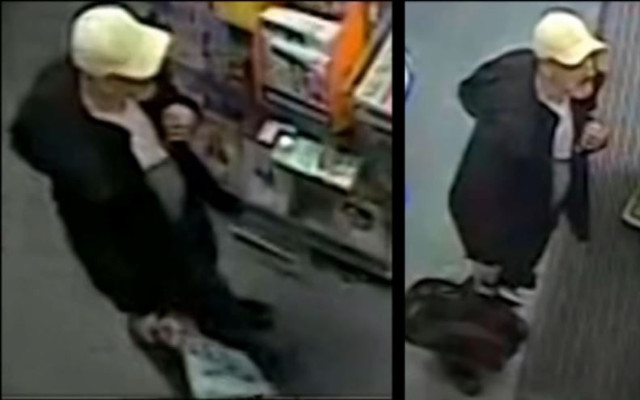
Hall took 17 minutes to walk from Market Street to the scene of Thomas Mair’s arrest on Risedale Avenue. Halls route included the detour to John Nelson close and he approximated Thomas Mair’s walking pace (as seen on CCTV.) Hall calculated that a brisk walk from John Nelson Close to Risedale Avenue took less than 15 minutes.
Local man Darren Playford (who did not know Thomas Mair) called police stating the killer was following him up Union Street. Mr Playford stated that he had lost sight of the perpetrator as he went behind the Vaults Pub on Huddersfield Rd. Given the CCTV timings, Hall estimated that Playford lost sight of the man wearing the blue jacket and the white baseball cap at 12.57 approximately.
Playford later stated that the man had reappeared, this time wearing a grey T-shirt and black cap. Mr Playford stated that this man, who was later identified as Thomas Mair, was walking up Brownhill Rd (towards Risedale Avenue.)
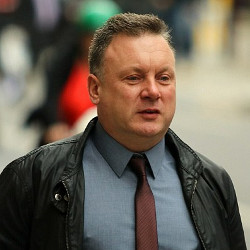
Hall asks some very important questions about Mr. Playfords alleged sighting. Firstly he suggests it was possible that Playford may have seen two different men of similar physical appearance. One wearing a white the other a black baseball cap. He also noted that Playford was the only witness to Thomas Mair’s alleged movements after exiting Union Street. It was Thursday lunch time on a clear day in a busy Market Town, therefore it does seem remarkable that Mr Playford was the only witness to Thomas Mair’s movements. Remember, no one saw Thomas Mair in or around John Nelson Close either.
The main problem Hall identifies with Mr Playfords account is the timing. Helicopter camera footage shows that Thomas Mare was arrested by police at just before 13.30. As it takes approximately 15 minutes to walk from John Nelson Close to Risedale Avenue that would mean Thomas Mair allegedly left the Close at 13.15 approximately. However Mr Playford lost sight of the man he was following a couple of minutes before 13.00 (Hall estimates 12.57.) Therefore, Mr Playford must have waited on the call with the police, while Thomas Mair was allegedly in the garden on John Nelson Close, for more than quarter of an hour.
The official account states that Police arrived at Market Street at 13.01, less than a minutes drive from where Mr Playford was on the phone to the them claiming he had sight of the killer. Apparently there was no police response for at least another 25 minutes.
The official timeline states that two patrol officers, PC Nichols and PC Wright drove past Thomas Mair as he approached White Horse Close at 13.10. They immediately turned the vehicle around and apprehended Thomas Mair in Risedale Avenue. However, the helicopter camera shows the arrest took place just before 13.30. It would have taken no more than a minute for Thomas Mair to walk from where he was first seen by police to the location of his arrest.
Therefore I believe Hall is correct when he states that the official timeline cannot be accurate. Given the location of the initial sighting, Thomas Mair must have first been spotted by police no earlier than 13.25. This timeline is consistent with reports that Mr Playford’s call to the police lasted between 14 and 20 minutes.
Witnesses who lived in Risedale Avenue (which is actually a cul-de-sac) stated that the two police officers drove quickly towards Mair. They shouted out to him, he turned, dropped the holdall bag, and the officers got out of the vehicle, rushed towards him and rugby tackled him to the floor. Notably this was the last time that the holdall was in Thomas Mair’s possession, he did not touch it again.
During the tackle Thomas Mair banged his head, causing it to bleed. Earlier footage of Thomas Mair showed this was the first time he bled that day. There was no blood visible on Thomas Mair prior to that moment, and no one stated that the man who attacked Jo Cox sustained any injuries during the assault. No DNA evidence at the murder scene identifying Thomas Mair has ever been produced.

One of the witnesses, Robert, stated that he clearly heard the police say, “are you Thomas Mair, have you just shot and stabbed someone in Market Street?” He mentioned this to his partner at the time, which she corroborated, as he thought it notable that the police already knew Thomas Mair by name. A couple of days later Robert was interviewed by the BBC and told them that the police knew Thomas Mair’s name when they apprehended him. This has never been reported by the BBC and neither of these witnesses were invited to give evidence at the subsequent trial.
Thomas Mair lived on the other side of Birstall (Lowood Lane) and no one in Risedale Avenue knew him. However less than three hours after the arrest the BBC broadcast that ‘local people’ had reported that the suspect was named Tommy Mair. At the time of his arrest, the only people who had apparently identified him were the police. However, the BBC were keen to stress all their information was received from local people, not the police.
There is no doubt the police knew his name. In addition to witness statement given to Hall, video evidence, taken at the time of his arrest, clearly recorded police identifying him by name stating, “that’s Thomas Mair.”
The obvious question to ask is how the police knew the name of the man they were looking for? None of the witnesses at the scene of the attack knew who he was. No witnesses at the arrest scene knew him. So how could the Police have possibly known his name less than half an hour after the alleged attack? Why were they looking for Thomas Mair?
The Pre-Trial Destruction Of Thomas Mair.
We were told that Thomas Mair was a far right extremist who believed in the concept of ‘white supremacy.’ He supposedly killed Jo Cox because she wanted the UK to remain in the EU. The murder of Jo Cox bore a startling similarity to that of Swedish politician Anna Lindh thirteen years earlier. Lindh, just like Cox, was murdered in the run up to an important vote on her nation’s relationship with the EU. The political reaction was identical in both cases. Campaigning on the impending referendum was suspended as a mark of respect and there was a poll swing favourable to the EU position. Regardless of the killers intent, just as in the case of Lindh, there was a political impact.

An endless stream of mainstream media (MSM) output castigated Mair as a deranged ‘nationalist’ extremist in the run up to his trial. There is no possibility at all that the jury were immune from the flood of claims that Thomas Mair was a far right ‘terrorist.’ For this reason alone, the fairness of Thomas Mair’s trial can be questioned. Moreover, there is significant reason to doubt the veracity of these stories.
Not a single person who knew Thomas Mair, including his mixed race brother, with whom he had a good relationship, knew anything about his alleged extremist views. They all described him as a quiet, polite man. An animal lover who cared about his local community and helped others.
He was a keen gardener, often working for free on his older neighbours gardens. He volunteered for local charities and had been interviewed by the local paper for his advocacy of a holistic approach to managing mental health problems. Notably, no one had ever heard Mair express any racist or xenophobic views. In fact, none who knew Thomas Mair had ever heard him express any strong political views at all.
If Thomas Mair was a far right extremist it appears he kept this entirely hidden from everyone who knew him for his whole life. Of course this does not exclude the possibility. Perhaps he is a man with secrets. However, there is evidence that the ‘extremism’ narrative surrounding Thomas Mair was created before he was said to have murdered Jo Cox.
Just as the police knew he had committed the crime within minutes, so it appears the mainstream media knew Thomas Mair was a far right extremist long before any material evidence emerged at his trial, supposedly corroborating this claim, some 5 months later.
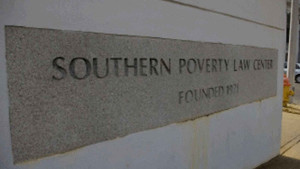 On the day of the murder numerous UK MSM newspapers published stories about Thomas Mair’s alleged extremism. Among them was a story published by the Daily Mail entitled, “Revealed: MP’s alleged killer ‘bought manual on how to make a handgun and bombs from a US far-right group and has links to neo-Nazi organisations going back decades.” The stated publication date and time was 23.15 on the day of the attack. A metadata check supports this and confirms the Mail’s story was written and published on the 16th.
On the day of the murder numerous UK MSM newspapers published stories about Thomas Mair’s alleged extremism. Among them was a story published by the Daily Mail entitled, “Revealed: MP’s alleged killer ‘bought manual on how to make a handgun and bombs from a US far-right group and has links to neo-Nazi organisations going back decades.” The stated publication date and time was 23.15 on the day of the attack. A metadata check supports this and confirms the Mail’s story was written and published on the 16th.
Thomas Mair’s name was first mentioned by the BBC at 16.30 on the 16th. Within 7 hrs, not only had the UK MSM discovered Thomas Mair’s alleged links to ‘far right’ groups but organisations in the United States had already carried out extensive research into his background.
The story in the Mail linked to research published by a so called ‘civil rights group,’ based in the U.S, called the Southern Poverty Law Center (SPLC.) Again the publication date was 16th June 2018. The SPLC website is published in Montgomery Alabama, which is 6hrs behind UK time (gmt.) Therefore, in order to make publication at 23.15 in the UK, the SPLC must have published their article no later than 17.00 on the 16th (U.S time.)
The first acknowledgment that a man called Thomas Mair was a suspect in the case came via the BBC at 10.30 Alabama time. This meant that the SPLC had just six and a half hours to carry out their extensive research on Thomas Mair, write, publish and distribute the article. Similarly, the Mail immediately picked up this article, verified the contents and published it within a few hours. A truly astonishing piece of collaborative, transatlantic journalism.
For the Mail to have a minimum of an hour to write their story, assuming the SPLC took at least an hour to write theirs, we can reduce the the SPLC’s research window to just four and a half hours maximum. What they achieved in those four and a half hours is, frankly, unbelievable.
When Thomas Mair’s name was released by the BBC the SPLC knew straight away that they needed to research records they held from a U.S based neo-nazi organisation called the ‘National Alliance’ (NA.) How they made this connection, before anyone had established any alleged link between Thomas Mair and any ‘neo-nazi’ groups is baffling. Luckily for the SPLC, the NA, a rag tag bunch of no more than a hundred neo-nazi volunteers which, by 2009, the SPLC itself described as “almost irrelevant,” apparently maintained incredibly detailed records. The SPLC didn’t say how they managed to ‘obtain’ them.
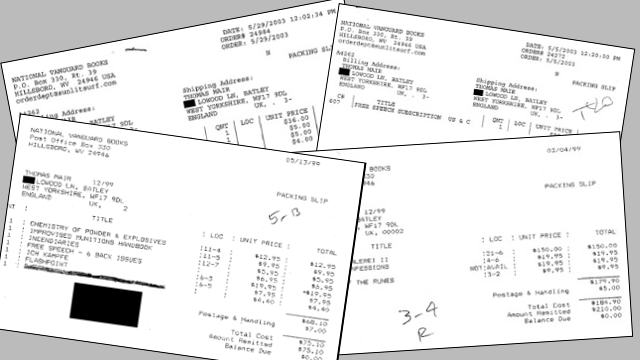
In just a few minutes the SPLC were able to search more than 17 years of NA records to locate receipts in Thomas Mair’s name. Even more remarkable, they were able to identify the the broad , home made, form of the gun used in the attack, months before the UK police released any firm detail on the alleged weapon. They then collated the ‘evidence, wrote and published their post allowing the UK MSM enough time to find, verify and then cite their article.
Any suggestion that the SPLC could possibly achieve all this in a few hours is untenable. It strongly suggests that a ‘far right’ narrative, in relation to Thomas Mair, was either created, or well known, before the alleged attack. It appears the article was ready to go as soon as Mair’s name was released by the BBC.
As the BBC were apparently lying about where they got their information it is not beyond the realm of possibility that they were involved. Perhaps they were compelled to release the name in order to facilitate the publication of the SPLC article? However, The BBC report did not leave anywhere near enough time, or provide sufficient information, to enable the SPLC to complete their breathtaking piece of research from scratch. Unless they, and others, already knew about Thomas Mair.

The SPLC has worked closely with the FBI for many years. Prior to the 1995 Oklahoma city bombing an SPLC activist, the lawyer and a founding member Morris Dees, was working with the FBI to provide intelligence from inside a far right training camp in Elohim City, Oklahoma. The SPLC’s relationship with the U.S state has lasted more than 25 years. The FBI disavowed itself from listing the SPLC as a resource in 2014. However they admitted to still working with the group in 2018.
It appears the SPLC has been used as a private intelligence asset and propaganda outlet by elements withing the U.S state for decades. Whether they were working autonomously, or under direction, when they ‘found’ the evidence relating to Thomas Mair is unknown.
Part of the rapidly emerging Thomas Mair ‘racist extremist’ narrative was based upon an account from an American neo-nazi called Todd Blodgett. He stated that he had met Thomas Mair at a ‘far right’ rally in the UK in a story published on the 19th by the SPLC. Blodgett was a well know FBI informant which, given their relationship with the SPLC, is notable.
Blodgett stated that he flew to the UK in 2000 for a meeting arranged by the NA with leading far right activists in the UK. He claimed Thomas Mair was among them. Openly admitting his role with the FBI, Blodgett stated he was part of an FBI / IRS Joint Terrorism Task Force (JTTF). Upon his arrival in the UK, he claimed he and the rest of the JTTF entourage met with two MI5 operatives who gave him a secure phone to use.
As an informant, his role would have been to report the events at the meeting back to intelligence operatives. Yet the UK intelligence services apparently knew nothing about Thomas Mair, prior to his alleged attack upon Jo Cox. In the aftermath of the attack the police stated they had to investigate Mair’s possible links with far right groups. If Blodgett’s account is truthful, these would have already been known.
Two possibilities emerge. If the SPLC already had genuine cause to believe Thomas Mair was a member of far right organisations with links to the U.S, this would explain how they were able to investigate his alleged association to the ‘National Alliance’ on the day of the attack. Perhaps they had already catalogued the evidence pertaining to Thomas Mair and could simply pull up the information from their database. If this is the case, then Thomas Mair was well known to the FBI and MI5. Which means he would be yet another ‘extremist,’ known to intelligence, who went on to commit murder. It would also suggest the police weren’t truthful when they stated they were ‘investigating’ his links to ‘far right’ groups.
However, there is significant doubt over Blodgett’s account of the alleged encounter with Mair. One of Blodgett’s far right colleagues Mark Cotterill, who knew many who attended the same meeting, which he states took place in 1998, flatly denied Blodgett’s story. Cotterill, and his other white supremacist chums stated they had never heard of Thomas Mair. Seeing as British intelligence also said they knew nothing about Mair, Blodgett’s claim of a meeting him seems extremely unlikely. This lack of plausibility is further supported by everyone who knew Thomas Mair, none of whom thought him a ‘far right’ extremist.
As discussed, there is no possibility at all that the SPLC knew nothing about Thomas Mair before 10.30 (U.S time) on the day of the attack. Had they not, they would have had no way of knowing about any links to the ‘NA,’ and wouldn’t have known where to start looking for information. Therefore, if Blodgett’s account was false, Thomas Mair was the target of disinformation campaign which began before the attack in Birstall occurred. If so, there is sound reason to suspect that the FBI, at the very least, knew about the existence of this planned propaganda. It was apparently released as soon as the BBC mentioned his name.
The Bizarre Detention, Trial & Conviction of Thomas Mair.
Regardless of what you believe about Thomas Mair, no one can justifiably deny that his detention and trial was one of the most bizarre episodes in British legal history. It set a significant, dangerous, legal precedent. Yet there has been no comment on this at all by anyone.
Following his arrest in Risedale Avenue, Thomas Mair was first interviewed by West Yorkshire police who charged him with the common law offence of murder. He was not charged under any counter terrorism legislation. Therefore, there was no legal justification to remove him from custody in Yorkshire. Ultimately, he should have been tried at Leeds or Bradford Crown Court. Yet, instead, he was whisked away to be detained in HMP Belmarsh in London.
Allegedly, Thomas Mair was formerly charged at Westminster Magistrates Court on the 18th. At his committal hearing, when asked to confirm his name, he supposedly shouted, “my name is death to traitors, freedom for Britain.” Indicating this was a man with strong political views who wanted his voice to be heard. Yet when he was supposedly interviewed by West Yorkshire police, less than 48hrs earlier, he said absolutely nothing. He didn’t confirm his name, say “no comment,” or even acknowledge that he was being interviewed. Far from trying to put his political ideology across, there was total silence.
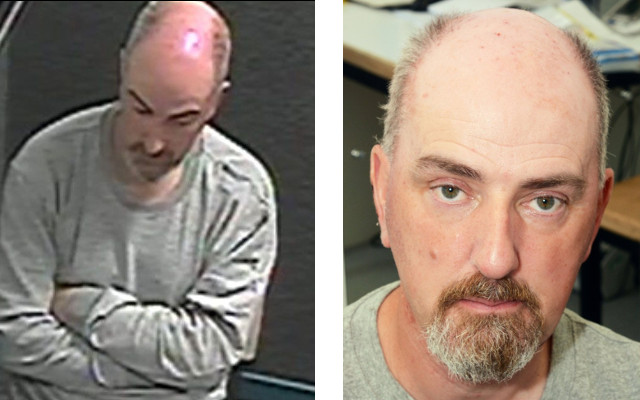
Why? If the man committed to trial in Westminster a few hours later was intent upon loudly declaring political slogans, knowing his interview with police would be used as evidence in court, why didn’t he seize the opportunity to expand upon his deeply held racist ideology? He actively sought notoriety by committing the crime, so why not tell the world about his beliefs and convince them of his claimed justification for murder? In light of his reported appearance at Westminster, his silence at all other times made absolutely no sense at all.
Unless the man at Westminster Magistrates Court, who was interviewed by West Yorkshire police and later convicted at the Old Bailey, was not Thomas Mair. This sound like a ridiculous suggestion but Hall provides evidence which strongly suggests this possibility.
For a start no one at the Westminster hearing knew Thomas Mair. There was no independent corroboration that the man in the dock was Thomas Mair. Hall showed photographs of Mair, taken when he was first detained in custody, and the footage of his interview to four people who were his close associates. They all said they didn’t think it was Thomas Mair.
If the man being interviewed wasn’t Thomas Mair, that would explain his silence. While someone who looked like Mair could visually pass on camera as possibly being him, if he spoke he would also have to match his voice. It is notable that the man interviewed was only seen from a high angle and kept his full gaze averted from the camera, at all times, in the released footage.
Another possibility is that the man was Thomas Mair but that he was given legal advice to say absolutely nothing at all. This would have been essential if Mair was a patsy. If Thomas Mair had started asking, during the interview, questions about why he had been arrested, denying his involvement or claiming he was nowhere near he crime scene, he would be laying the ground for a thorough defence at trial. A completely silent Thomas Mair would enable a ‘no defence’ trial to proceed.
Having looked at the pictures and video, I disagree with Hall on this, I think that the man interviewed by West Yorkshire police probably was Thomas Mair. However, I cannot ignore the claims of those who knew him, as reported by Hall, who say otherwise. If it was Mair, I suggest he was possibly instructed by his supposed legal team to stay absolutely silent. There would appear to be no other logical conclusions. I do not believe that the man who stood trial was necessarily the same man initially interviewed. Something we’ll get to shortly.
We have already explored the strong possibility that the man who supposedly killed Jo Cox was not the man later arrested on Risedale Avenue. If Thomas Mair was a patsy it is usual for them to be killed before they can protest their innocence. Hall speculates that the intention may have been to kill Thomas Mair in the garden on John Nelson Close. If the operation went wrong, and Thomas Mair wasn’t where he was supposed to be, this would present a significant problem for those running the deception.
Once the police were involved it would be very difficult to kill the patsy. Damage limitation would next require that under no circumstances at all should the patsy ever get an opportunity to tell their story. Recorded statements to investigators, court appearances, legal defences and the cross examination of evidence would be out of the question. Therefore it is worth noting that the man the court identified as Thomas Mair, at his alleged trial, said just one, barely audible word, offered no defence and there was no significant cross examination of the evidence offered by the state.
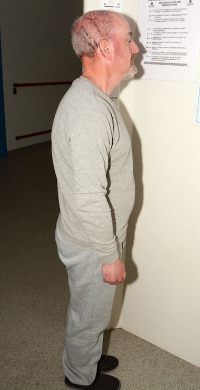
The man supposed to be Thomas Mair, who shouted out “my name is death to traitors” at his committal hearing, didn’t even offer a plea in his defence. The not guilty plea was entered by the Crown on his behalf. During his entire five day trial this man, apparently driven by political fanaticism, only quietly said ‘yes,’ when asked if he was Thomas Mair.
That was it! No further comment, no defence offered, no thorough exploration of any evidence and no attempt to offer mitigation. Nothing, just stony silence as the prosecution made its case without being challenged by anyone. The only semblance of any defence offered by QC Simon Russel Flint was a brief discussion over what Thomas Mair said when he was arrested. Remarkably, Flint’s final summation to the Jury could equally have been said by the prosecution:
“You and you alone will determine whether Thomas Mair can return to his quiet and solitary existence or will forever be remembered as the man who assassinated Jo Cox.”
There are two, specific situations which provide legal grounds for offering no defence. Neither of which appeared relevant in the case of Thomas Mair.
If the defence barrister knows for certain that the defendant is guilty then they are somewhat limited, under the Barristers code of conduct, to what they can or cannot say in court. This could make meaningful cross examination virtually impossible, depending upon the nature of the evidence for the prosecution.
If the man called Thomas Mair told Mr.Flint he was guilty, presumably Flint advised Mair to plead guilty. This would undoubtedly have improved sentencing prospects. But the man called Mair must have both admitted guilt and then entered no plea. Thereby forcing a defence at trial. This is not plausible.
It is silly to imagine that Thomas Mair admitted guilt, then refused to plead, forcing a ‘not guilty’ defence at trial, but then said nothing in court. A high profile trial at the Old Bailey would have been the perfect stage to declare his political beliefs, so pleading ‘not guilty’ would have provided him that opportunity. Yet the political fanatic, by not to pleading at all, effectively ensured he would be tried with a limited defence, in silence.
Remember, we are told he actively took steps to evade capture. So he wasn’t keen on going to prison for as long as possible. Yet we are asked to accept, following legal advice, he not only made every effort to ensure he received the harshest possible punishment, but also refused any and all opportunities to rant about his twisted ideology. Ridiculous as it sounds, this is what we are supposed to believe.
Even though it made no logical sense, we can be certain that an admission of guilt to his defence team must have been the reason why no meaningful defence was made. The only other legitimate reason for not mounting a proper defence wasn’t remotely possible.
If the defence can’t find anything, or any way, to challenge the prosecutions evidence, they may advise their client not to offer any defence. This is in circumstances where the prosecution’s evidence is so overwhelming it is unassailable. The defence may judge that any attempt to challenge the evidence would only serve to further incriminate their client. This was definitely not true in the trial of Thomas Mair.
Any idiot could have driven a truck through the woeful evidence offered by the prosecution at the Old Bailey. Mr flint is an extremely experienced barrister and no idiot, so the lack of a defence can only have been through contradictory admission of guilt, followed by an unfathomable refusal to plead. If it was ‘legitimate.’
In short, any claimed justification for not defending Thomas Mair is wholly unbelievable and must be questioned. At the very least, it seems the he was offered some of the worst legal advice in history.
Thomas Mair was convicted on the following evidence.
- The man in the dock was Thomas Mair
- Witnesses saw the man in the dock murder the victim.
- The murder weapons were found in his possession.
- Forensic evidence tied the murder weapons to the defendant and the victim.
- Evidence proved motive and there were no mitigating circumstances.
- Jo Cox was assassinated.
Regardless of any possible limitations under the barristers code of conduct, Mr Flint QC was free to cross examine the evidence presented by the state. His client was effectively pleading not guilty and, under such circumstances, was entitled to a robust defence. The onus is upon the prosecution to prove guilt, all the defence has to do is demonstrate reasonable doubt. Given how weak the prosecutions evidence was, Hall is absolutely right to question Thomas Mair’s conviction.
The Man in the Dock Was Thomas Mair.
No member of Thomas Mair’s family were allowed to attend the trial. Why not? The man in the dock did not swear an oath that he was Thomas Mair. None of the witnesses called by the prosecution knew Thomas Mair and none of them saw Thomas Mair being arrested. Apart from one solitary, barely audible ‘yes,’ the man in the dock did not speak for the entire duration of the trial.
Court artist Julia Quensla drew pictures, seemingly of the same man, on three separate occasions. Her drawing of the man in the custody video, the man at Westminster Magistrates Court and the Man on trial at the Old Bailey are consistent. This was a man with quite an angular face, sharply defined features, squarish jawline and arched eyebrows which closely met at the bridge of a straight pointed nose. The man had a uniform greying beard, a heavy brow, wrinkled forehead, strongly defined facial creases between the cheeks and the nose and a harsh countenance. He bore only a passing resemblance to Thomas Mair.
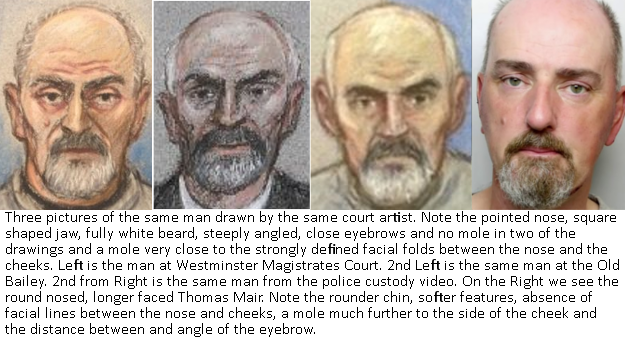
Witness testimony was read out to the court from a neighbour of Thomas Mair’s. She stated that she saw him on the morning of the 16th, from her vantage point in a passing bus, walking along carrying an orange bag, wearing a light coloured baseball cap. This witness, who knew Thomas Mair well, was not called to testify, was not in the court and could not identify the man in the dock as Thomas Mair.
Nor were the witnesses to his arrest called by the defence. Their statements weren’t even taken by the police. Not only would they have been able to testify whether or not the man arrested was the same man sat in the dock, but could also have testified that the police knew the defendants name before they arrested him.
It is inconceivable that Thomas Mair didn’t tell his defence team about the police knowing his name. This alone would have cast immense doubt upon the states narrative. That his defence didn’t call any witnesses to his arrest appears, on its own, to suggest a miscarriage of justice. However, it is far from the only reason to suspect Thomas Mair’s wrongful conviction.
The prosecution offered a considerable amount of CCTV evidence to the court which Hall has used throughout his documentary. It is patently obvious from reviewing that footage that there is considerable doubt that Thomas Mair, the man arrested, was the same man seen carrying out the attack in the footage. Are we seriously expected to believe that his defence team didn’t spot any of the clear anomalies between the recordings? The idea is an absurdity.
At his committal hearing the man shouted out “my name is death to traitors.” So, in fact, the man at the committal didn’t claim he was Thomas Mair. Not a single person who knew Thomas Mair was at the Westminster hearing. There are no photographs of Thomas Mair arriving at, leaving or in the dock for either court hearing.
There is no evidence at all that the man who stood trial at the Old Bailey was Thomas Mair. In fact the evidence presented suggests he was not. The legal principle of habeas corpus, which literally means “you may have the body” was apparently abandoned in the trial of Thomas Mair. It is the principle that says anyone detained by the state must be presented to a court to determine if that detention is lawful. It seems that didn’t happen in this case.
What is certain is that Thomas Mair has been imprisoned for the rest of his life.
Witnesses Saw the Man In The Dock Murder the Victim.
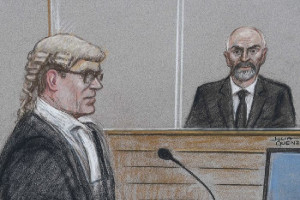
Not one of the witnesses was asked by either the prosecution or the defence to identify the man in the dock as Thomas Mair. Is this because none of them could have done so? Moreover, not a single witness was asked to identify the man in the dock as the killer. This is extremely unusual given the number of witnesses. We must ask why the prosecution didn’t assert this obvious evidence at the trial. Could it be they feared the witnesses would have been uncertain?
The man in the dock was not positively identified either as the killer or Thomas Mair. He could have been anybody.
The Murder Weapons Were Found in His Possession.
When apprehended Thomas Mair was carrying a black holdall which he threw to the ground when instructed by the police. He did not come into contact with this bag again. At the trial PC Nichols stated that Thomas Mair had said he had a knife in his pocket. On this occasion the defence objected claiming he said no such thing. However, this objection effectively supported the prosecution because neither arresting officer testified to finding any knife in Thomas Mair’s possession.
PC Nichols stated that he found a gun in the bag and PC Wright testified that he felt the bag, without looking inside it, and could perceive the form of a gun. Neither officer stated that they found any knives in the bag. PC Wright also testified that he found a plastic bag of bullets in Thomas Mair’s pocket with ‘about’ eight bullets in it.
The jury were then given unsigned written testimony from an unnamed senior crime scene investigator who supposedly arrived at the site of Thomas Mair’s arrest, an hour or so after he was apprehended, at 14.50. Neither the prosecution nor the defence called this investigator as a witness. Ensuring their testimony could not be examined at all, let alone cross examined.
This oversight by the defence is totally inexplicable. The testimony proved the case should have been dismissed there and then. The statement reported that the investigator found a large ‘dagger’ type knife and a smaller gold knife at the arrest scene, lying on the road. They also stated that the handle of the gun could be seen sticking out of the bag.
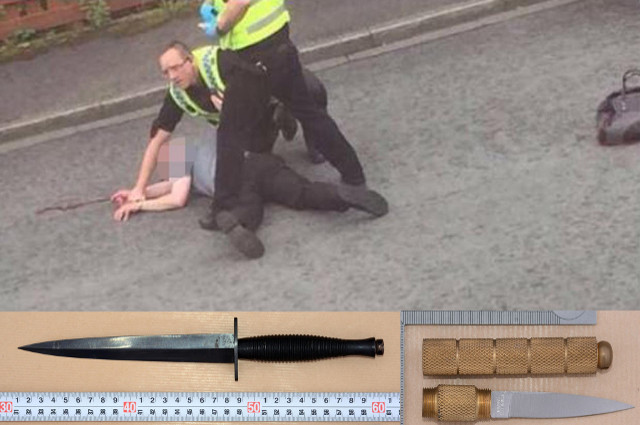
This totally contradicted the sworn testimonies of the arresting officers and the video and photographic evidence at the scene of the arrest. Neither of the officers claimed to have found any knives and certainly didn’t see any laying out in the open.
There are no such weapons visible on any of the witness footage of the arrest. It should be noted that this footage had been posted on social media and had been widely circulated.
PC Wright stated that he had ‘felt the presence of the gun’ and didn’t see it. So we are asked to accept that a trained police officer failed to notice the handle of a gun sticking out of a bag belonging to a suspect he had just arrested on suspicion of murder.
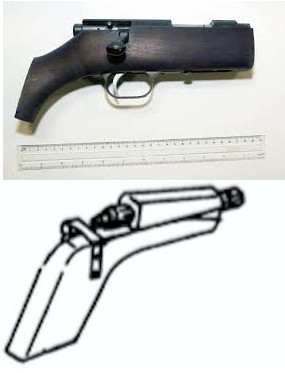
No evidence was ever presented that Thomas Mair had ever acquired any of these weapons. None of the witnesses to the arrest, who weren’t called to testify by the defence, saw any knives or a gun.
The idea that an experienced defence barrister was incapable of smashing the states narrative to pieces with this obviously contradictory evidence, which proved the planting of evidence by ‘unknown’ individuals, is utterly ridiculous.
The gun itself, when presented to the court, was extremely similar in form and function to the gun which the SPLC had suggested would be found, in a story undoubtedly written before Thomas Mair was arrested.
Thomas Mair would have fared much better if he had represented himself.
Forensic Evidence Tied the Murder Weapons to the Defendant and the Victim.
The jury heard that blood from Thomas Mair and Jo Cox were found on the gun and in the bag. They were also told that blood was found on Mair’s phone and wallet.
No evidence was presented which suggested the killer sustained any injuries during the attack. No CCTV or witness footage showed any sign of bleeding on either the killer or Thomas Mair. No blood spatter from Jo Cox was found on Thomas Mair’s clothing when he was arrested. No DNA evidence, linking Thomas Mair to the murder scene was produced. No evidence of firearm residue on Thomas Mair was presented to the jury.
The evidence showed the first time Thomas Mair bled that day was when he hit his head on the floor as the arresting officers rugby tackled him. This was after he had placed the bag on the ground and he did not touch it again. It seems the only possible way his blood could be in the bag, or on the gun, was if it was planted, like the knives, after his arrest.
His ‘defence team’ were apparently so incompetent they failed to highlight any of these evidential flaws to the jury.
Evidence Proved Motive and There Were no Mitigating Circumstances.
It is almost beyond belief, but at the trial of Thomas Mair the jury were not asked to consider motive. Establishing motive is one of the most important elements of any criminal trial. In the case of causing a death it is the difference between murder and manslaughter. At no stage did the Crown prosecution mention the word ‘terrorism.’ The explanation for this is that they did not want the jury to be ‘confused’ and only wanted them to consider whether or not the man in the dock (whoever he was) killed the victim. This is preposterous.
Thomas Mair was convicted of the common law crime of murder and the jury did not identify any motive. Yet the judge at his Old Bailey trial stated that the murder was inspired by his belief in ‘white supremacy’ and ‘extreme nationalism.’ Thomas Mair received a whole life tariff from Mr Justice Wilkie, under schedule 21 Criminal Justice Act 2003. This enabled the judge to announce ‘terrorism’ as the motive pursuant with Schedule 2 of Counter-Terrorism Act 2008. After the verdict.
Why the jury weren’t asked to consider motive is anyone’s guess, because they sure were shown a tremendous amount of evidence specifically related to motive. The jury were shown a huge array of far right literature, memorabilia and documents, supposedly demonstrating Thomas Mair’s ‘far right’ fanaticism. They heard that officers found an SS officer’s book on race theory and mate selection, along with other white supremacist texts at Mair’s home. ‘Motive’ in other words. They also heard that computer search evidence from both the library and his home computer suggested he was actively searching subjects related to the crime.
Had Thomas Mair had any kind of defence at all, by this stage of the trial, the jury should have been well aware of the high likelihood of planted evidence. Consequently they may have treated this so called evidence with the suspicion it deserved.

Only minutes after Thomas Mair’s arrest police entered his home address on Lowood Lane. Here they found the extensive treasure trove of ‘far right’ items. Presumably no one who knew Thomas Mair, including all his family members, had ever been in his house, because none of them knew anything about his massive stash of Nazi books, films, artifacts (including a large metal Third Reich eagle on prominent display) and other assorted terrorist related documents.
Perhaps the alleged fact that he kept all this hidden in his bedroom would account for this? Again the suggestion is that the radical far right extremist was very sheepish about his views. But no so sheepish that he wasn’t prepared to carry out a politically motivated murder in broad daylight in a busy market town.
Thomas Mair was in custody at the time of the entry and search. Therefore, under the Police and Criminal Evidence Act 1984 (PACE,) the only possible justification the police could legally enter his property without a warrant would be:
“in an attempt to save a life or prevent injury to someone or serious damage to property.”
As there was neither any reason to fear anyone else’s life was in danger nor any evidence to suggest a threat to property, the police must have had a warrant, signed by a judge, in order to effect legal entry and search. Because otherwise, all the evidence they claimed to have found would have been inadmissible in court. A first year law student would have it thrown out in less than a minute.
Seeing as the police entered his house within minutes of his arrest it seems unlikely they had time to secure a warrant. However, at his trial, this issue wasn’t clarified and the defence didn’t bother to ask.
Something else first year law students understand is the value of mitigating circumstances. Thomas Mair had suffered bouts of depression and was due to attend a counseling appointment on the day of the attack, having sought support the previous day. The obvious tactic of any defence team would be to explore the possibility that his mental health state contributed to, thereby mitigating to some extent, his alleged actions. They didn’t.
Based upon all this probably inadmissible evidence, in addition to the sentencing remarks, the Crown Prosecution Service said Thomas Mair committed an act of terrorism. Yet the fact remains, the jury were only asked to consider if he was guilty of murder, not any terrorist related act. Motive was not established. Terrorism or otherwise.
Jo Cox Was Assassinated.
The most dangerous precedent to emerge from the alarming trial of Thomas Mair was the complete absence of any material evidence of a body. Not all murder trials can provide evidence of a body. Sometimes the victim is never found and the evidence is largely circumstantial. However, where that is not the case, such as in Thomas Mair’s trial, if the jury are shown no material evidence of a body there must be significant doubt that the murder took place as described. How could it be otherwise?
To be clear, like Hall, I am by no means certain that Jo Cox didn’t lose her life that day. All the witness testimony shows that many people saw what they thought was a murder. I wasn’t there, they were. Her body was identified by her sister in a mortuary in Bierley, Bradford. It is reasonable, in light of the evidence presented, to believe that a murder was committed.
However, the fact is the jury at the trial were not presented with any material evidence of a body. Given that her body was supposedly available for evidence, doubt is also entirely reasonable. Moreover, Thomas Mair’s defence team’s failure to question if the crime happened at all, which was an obvious line of inquiry given the absence of any evidence of a body, is perhaps the single biggest reason to be concerned over the safety of his conviction.
The inquest into Jo Cox’ death was opened on 24th June 2016 and then adjourned six minutes later, allowing the body to be released for burial. At the inquest Det Insp Nick Wallen, of West Yorkshire police, said a post mortem had been completed. Det Insp Wallen also stated that Jo Cox was pronounced dead in an ambulance at 13.48 on the 16th. While reports say the inquest was ‘adjourned,’ there is no record of it ever being reconvened. It appears these six minutes represented the entire extent of the coroners involvement.
In order for a coroners inquest to have any meaning at all, someone, referred to as the informant, has to testify to the inquest that they have seen the body. Notably Jo’s sister, who could have been the informant, did not attend the inquest. This is then recorded, by the registrar, on the death certificate. Jo Cox’ death certificate reported the cause of death as ‘multiple stab and gun shot wounds.’ It was not signed by the informant. Nor was the death certificate signed by the registrar.
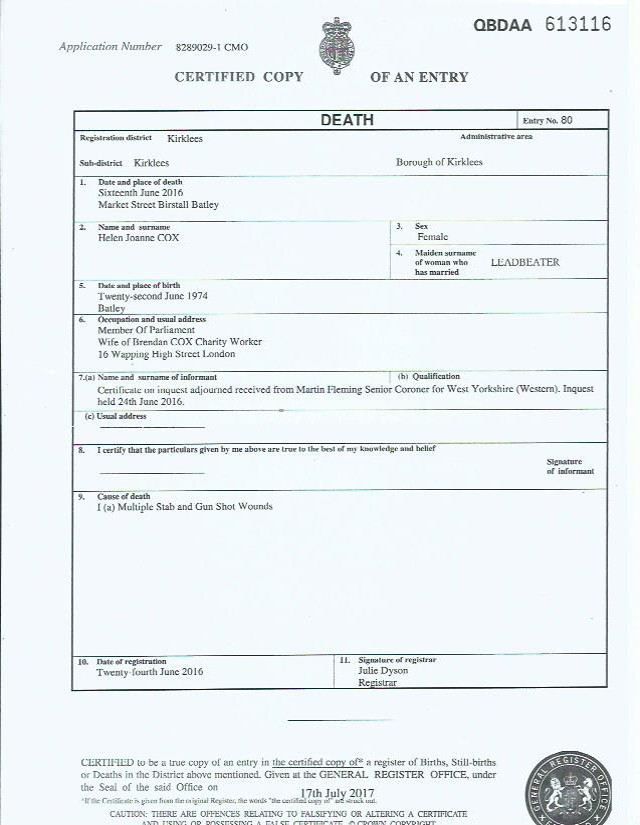
There appears to be no legal record of her death. Yet Thomas Mair’s supposed defence never questioned this.
The pathologist who examined Jo Cox was Dr Richard Shepherd. Dr Shepherd has been the pathologist for some very high profile victims. He was the pathologist for victims of the Hungerford Massacre, 9/11, 7/7, Stephen Lawrence and Princess Diana among many others. He was also instrumental in supporting the findings of the pathologist in the death of U.N weapons inspector Dr David Kelly. His ‘expert opinion’ was heavily relied upon to stop any inquest into Dr Kelly’s death. To say he is a ‘controversial’ pathologist is something of an understatement.
The purpose of a postmortem examination (autopsy) is to establish the precise cause of death. Another important function is that a ‘scalpel autopsy,’ indicating the depth and force applied to create the wounds, can reveal the intent of the murderer. Were they frenzied or calm and precise? Was it a crime of passion or premeditated assassination? It can also match the injuries to the murder weapon.
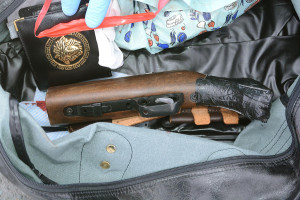
Without this vital evidence any half baked defence barrister could have argued that there was no evidence the victim was killed with the alleged murder weapon. Without examining the wounds how does anyone know she was shot with the .22 calibre gun found, or stabbed with either of the knives?
This is an essential procedure which cannot be legitimately overlooked in a murder trial. Yet, at Thomas Mair’s trial, that is precisely what happened.
The jury were told that it would be too upsetting for them to see material evidence (photographs) of the wounds and the body. Sitting through a murder trial must be a harrowing experience for any juror, but they absolutely must be shown the evidence. It is not unusual for the jurors to be shown computer generated images (CGI) in addition to physical evidence, but it is unheard of for them only to be shown CGI and no material evidence of a body at all.
This is contrary to the guidance of the UK Chief Coroner on the use of postmortem imaging which states:
“Imaging should not be used as the sole type of postmortem investigation where the circumstances of the death are suspicious or controversial, except where the cause of death is obvious.”
Jo Cox reported murder was highly suspicious and very controversial. The precise cause of death for Jo Cox was not ‘obvious.’ Saying she was stabbed and shot, from an evidential perspective, is no different to saying someone died because they were in a car crash. Describing the event is not a determination of cause of death.
The only evidence that Jo Cox died were witness statements. None of these witnesses testified to seeing any wounds, just lots of blood. There were no photographs showing the body at the scene, none of the body being removed from the scene, no record of the body being received by Leeds infirmary, no postmortem images (apart from cartoons) and no legal death certificate.
Conclusion
There appears to be evidence which shows that the man who possibly killed Jo cox was not the same man who was arrested on Risedale Avenue. This man was Thomas Mair.
It is impossible to overlook the clear evidence which indicates that the police were looking for Thomas Mair by name, within minutes of the alleged crime. At that stage, if the crime was genuinely as described, they could not possibly have known the killers name. It is reasonable to suspect that Thomas Mair was the designated patsy for some kind of operation by persons unknown.
The SPLC could not have researched and written their hit piece on Mair, so soon after the murder, if they didn’t already know who he was. This indicates that the narrative, painting Thomas Mair as the far right extremist, was prepared in advance of his arrest. Again, suggesting he was a patsy. That not one person who knew him could believe he even held strong political views, let alone that he was capable of committing an extremist act, cannot easily be ignored.
The total silence of the man interviewed by West Yorkshire police is inexplicable. Either this man wasn’t Thomas Mair or he had been given legal advice designed to deliberately harm his own case. There are solid grounds to believe the man who shouted out at Westminster Magistrates Court, and later stood for trial at the Old Bailey, was not Thomas Mair. That no one who knew him were permitted to attend his trial is also notable.
Thomas Mair was quite possibly convicted in absentia (no habeas corpus) and sentenced to life in prison without any defence at all. Despite the complete absence of any challenge to the state’s evidence, it was still painfully thin, self contradictory and strongly suggested Thomas Mair was framed.
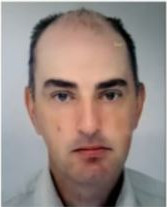
No witnesses testimony placed Thomas Mair at the scene of the crime; there was no forensic or ballistic evidence placing him at the scene; the strong possibility of planted evidence repeatedly emerged during the trial; normal forensic procedures were ignored; standard documentation was missing or incomplete and, for the first time in British legal history, despite the alleged presence of a body, no material evidence of a death was presented to the jury in a murder trial.
Like Hall I believe Thomas Mair was wrongfully convicted in one of the worst miscarriages of justice ever perpetrated in Britain. It suggests corruption at the highest level and appears to be a terrifying example of the unbridled misuse of state power.
However that is just my opinion and you must make yours.
Meanwhile, Thomas Mair will remain in prison for the rest of his life.

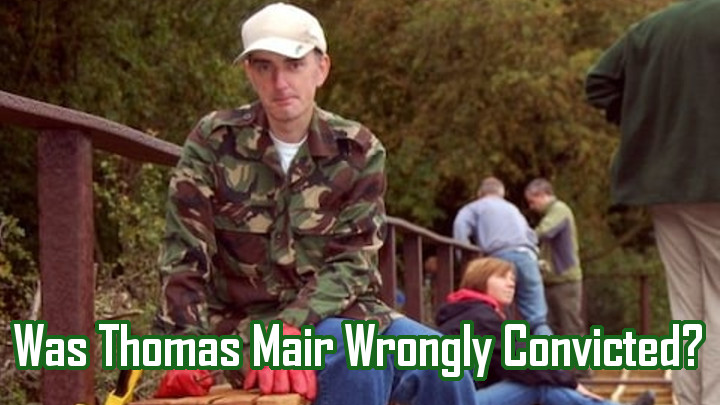




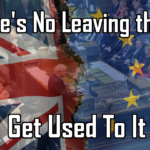



Brilliant!
Hope you will be presenting this ‘to whom it may concern.’
All the best.
Thanks Larry. I think the first thing to do is gather more evidence. A transcript of the trial, which is very expensive, would be a good start, before considering any possible legal advice. Is it feasible to address this possible miscarriage of justice? I really have no idea.
Isn’t a more likely conclusion that, JC was not murdered, the whole thing was a sham and TM is not in prison?
Has he done any interviews since?
I think all we have at the moment are questions. Richard D Hall wrote to him and he replied.
The SPLC did get hold of a list of all the customers of the National Alliance bookstore over a decade ago and this was reported at the time. I cant remember if they used a spy/infiltrator to copy it, or whether they got hold of it through a court case. Anyway, they would have gone through it and put every name on a database with the relevant books bought so that whenever a violent incident is reported around the world they can check it against the database and pronounce the criminal a ‘white supremacist’. I believe they have done it before, not just with Thomas Mair.
There is something that you appear to have missed about this incident too. Thomas Mair was pronounced a ‘Far Right Extremist’ due to the books he had, but they included titles such as ‘Schindler’s List’ and ‘The World at War’. There were no revisionist/holocaust denier books in his collection that I could see. He was just somebody interested in the war and he believed the victor’s version of it. The ‘Far Right’ believe Hitler was the good guy in that war, that there was no plan for killing Jews, no gas chambers and no 6 million number of dead Jews. There were no books in his collection suggesting he believed that, far from it, he looked like a full on Hitler hater from the ones shown in the picture. He may have had the odd David Irving one in there, but most people interested in the war have those.
Nobody involved in Nationalism in Britain had ever met him or had interactions with him in real life or online either. If he did do it, then it was probably because Jo Cox was turfing him out of the council house he had lived in all his life in order to house Syrian refugees in it.
Thanks for the interesting info. Will check out where they got the NA list and how the SPLC got hold of it and may update the post. Interesting point on the books and videos. I did notice the Schindlers List and others. Hardly far right, as you say. I did miss the good point you made, thanks for highlighting it. As you have alluded to I don’t think the evidence shows either that Mair was the killer or a racist ‘white supremacist.’ Of course, I can’t rule out the possibility, but it seems unlikely in my view. Thank you for confirming no one involved in Nationalism in Britain knew him. I’m not a British Nationalist so had no way of knowing. Much appreciated. All the best.
Thank you for this excellent analysis of the conviction of Thomas Mair. I remember the febrile final two weeks of the EU referendum campaign, and the 16th June when news broke about the killing of MP Jo Cox. Something did not smell right on that day… I was very troubled by the official narrative which was rolled out immediately in the msm. The crazed neo-nazi killer gunning down a defenceless Remainer MP shouting “Britain First”, the instant appearance of corroborating “evidence” from the Southern Poverty Law Centre, the convenient suspension of campaigning as a mark of respect just as the Leave vote was gathering pace, the sanctimonious grandstanding from “Remainer” MPs accusing the “Leave” campaign of fomenting dangerous racism and bigotry… and most of all, the strange footage showing the suspect, Thomas Mair being arrested. All very, very odd.
I started digging into this, and I learnt the phrase “false flag” – I hadn’t heard of that before. I also learnt the word “patsy”. I didn’t have much evidence, but I thought that it possible that Thomas Mair had been set up, he was a patsy, and this was a false flag. Then I forgot about it, and by the time the trial happened I was willing to suspended my disbelief. BUT (big but) the trial was an absolute sham. I was furious. This was supposed to be justice for Jo Cox, it was supposed to provide answers about motive, but it was an out-and-out stitch up. If Mair was a neo-Nazi killer, fired up with right-wing ideology, willing to spend life in prison for his beliefs… why did he not utter a single word during the trial? Why did his “defence” team simply give the nod that he was guilty? Why did the police insist to the media that they didn’t know his identity in advance when they so clearly did?
Anyway, I am now 90% sure that Mair did not kill Jo Cox, and that he was indeed a patsy. I am 100% sure he didn’t get a fair trial.
Thanks for the excellent comment Fran. Like you I’m 90% convinced that he is innocent, I’m 50/50 on whether or not JC is dead and, like you, 100% certain he didn’t get a fair trial.
Great work. Well done. Interesting that Brendan Cox is now being mentioned in connection with the Jeffrey Epstein case. Do watch Amazing Polly (cruise through the Epstein Swamp) on Youtube.
Many thanks. Interesting about Brendan Cox. Will do, thanks for the tip.
Did you ever try to get hold of the trial transcript ?
No because I couldn’t afford the Ex107. You? Or do you know anyone who has?
If yet another, of so many, ‘Inside Jobs/False-Flags’ (e.g. Dreyfus/Maine/Pearl Harbor/JFK/Liberty/RFK/Tonkin/Kuwait/911. etc) then by whom and with what motive?
Thanks Tina. This isn’t clear. Richard D Hall has suggested the possibility that Jo Cox was involved in the publication of the Panama Papers (possible revenge, silencing?) Clearly there was a notable swing in the referendum vote towards Remain (possible political motive?) Others have suggested that possible exposure of paedophile rings. In truth I don’t know. The purpose here was not to guess at motive but rather to highlight the incredible inconsistencies in the evidence that supposedly convicted Mair (I question if the man was even in court – no habeous corpus.) Perhaps motive for any possible intelligence/deep state operation can be investigated at some point. However what matters most to me is the Thomas Mair receives a retrial which thoroughly examines the actual evidence.
Well, shock, horror, the establishment at its best? I’ve been wondering for some time what sort of treatment Mair has been receiving and whether he has had any visitors, absolutely nothing can I find. The other thing, what happened to the records that must surely have been kept at Cox’s office about his visits regarding his possible eviction. Nothing mentioned any where. Where are they?
Thanks Ernest. I am aware that people have tried to contact him. Including Richard D. Hall. Richard received one cautious reply and I heartily recommend you go to https://www.richplanet.net/ and check out all the work he has done on the subject. As far as anyone knows Mair’s mail is being held in his property box and he may not have received it. Some have tried various methods to contact him without success. Even inquiring for his welfare has been difficult. People believe he may have been visited by his mother but other than that his condition and awareness of those questioning his conviction is unknown. It is very concerning.
Excellent piece, Ian; it complements Richard D Hall’s work beautifully.
The whole Jo Cox (‘Joke X’, in the referendum vote?) saga reminds me of the death of Jill Dando and the subsequent prosecution of Barry George.
I studied this case a few years ago, as a law student and it was very quickly apparent that Barry George couldn’t possibly have been Dando’s killer.
The parallels between George and Mair, as somewhat solitary outsiders in their respective communities, are striking.
From an exhaustive study of many false flag operations and state sponsored executions, I would say there is a familiar script for how such events are carried out, which becomes all too apparent on closer examination.
Keep up the good work. This country truly needs people like you.
Thanks Nick, I appreciate the encouragement. I agree there are many similarities between what clearly appear to be patsies. Special needs of some sort or mental health problems are common. Not just Mair and George either. Adam Lanza and Sirhan Sirhan spring to mind. A familiar script indeed.
Sorry: Iain!
Lol. No worries Nicholas.
Have you done a piece on Adam Lanza and Sandy Hook?
I wonder where you stand, in relation to Wolfgang Halbig and James Fetzer?
No I haven’t. I tend to stay clear of U.S national events, with the exception of 9/11. I think better placed researchers than I have covered SH extensively. Not sure what I make of it. I am somewhat wary of the no one died narratives but there does seem some evidence to suggest that possibility in the case of SH. I find Halbig quite genuine but again haven’t focused much on his case. I am not a fan of Fetzer.
Fetzer is a difficult character to get a handle on. I think he’s ‘the real deal’, but he is somewhat too bellicose for my liking.
His on air bust-up with Kevin Barrett was truly bizarre.
In his defence, he does have an excellent analytical mind and he has learned how to moderate his tone a little, in recent years. Must be old age!
Fetzer is absolutely insane. Rediculouse.
After a year of trying to contact Tommy Mair, I received a Xmas card from him. I had to bypass the normal line of communication to do so. I was interviewed by Richard Hall, which you can view on his website. Richard also received a card out of the blue.
The authorities had placed many obstacles in my way, but I persevered. In the New Year I shall be exposing the rather dodgy financial matters attached to this case.
Good news John. I saw you interview on Richard.D.Hall. I believe we both spoke after Richard’s Bournemouth presentation. I look forward to hearing what more you have uncovered. Please don’t hesitate to contact me if I can help in any way. Writing is my thing and bringing information together into a single, cohesive narrative is something I like to do. So if that’s any help to you please let me know.
There are copies online of the receipts for payments Thomas Mair allegedly made for the books he purchased in America. Surely he would have had too pay for these electronically with a card. The prosecution could have entered his bank or credit card statements in evidence to show this. If they did not then one could assume these payments did not exist. Or maybe they did and that would put a large hole in a lot of the evidence that it was not Thomas Mair who was involved. Any thoughts anyone?
You raise an excellent point. Yes bank records would have proven the purchase wouldn’t they? Strange the prosecution didn’t bother. However, given that there was no defence in his trial I don’t suppose they needed to be too fussed. There are so many holes in the evidence it is difficult even to begin to consider where to rank them. This definitely needs to be filed under the inexplicable absence of evidence.
Have you seen the latest update by Richard D Hall? I think you may need to buy a ticket for his Virtual Tour – well worth it.
Basically Hall casts doubt on whether TM is in prison and as always gives reasoning behind his theory.
Yes I’ve seen it. Very interesting. Not sure I agree with it. Though complicity makes some sense I don’t see why TPTB would require it. On the fence t the moment on Richard’s latest.
I’m what the media would call a nazi but I think Tommy Mair is probably guilty of the crime he’s been convicted of. Most of Richard Hall’s contentions are easily explained in my opinion.
Funnily enough, the one point that Hall raised that did give me pause for thought is a one which you’ve skimmed over. Hall showed, indeed proved, as far as I can tell, that the bag Mair was carrying when tackled to the floor by police was different to the bag that appeared in the close-up evidence photos that the police released. The bag was similar but a slightly different model. That was odd.
Thanks Richard. I would be interested in hearing how the issues highlighted by Hall can be easily explained. Yep, the bag anomaly is also interesting. For example, how do you explain the witness accounts that report the police called him by name? Beyond the obvious that the accounts are wrong, of course.
Thanks for your reply, Iain.
You’re right, the witness statement is a solid contradiction of the official version of the arrest and I can’t easily explain that one away. Assuming the witness is remembering accurately, it might be that the police did receive Mair’s name before the arrest but there was some legal technicality that lead them to change their story. Perhaps he was on their radar and they got caught napping. Perhaps Mair was put up to it by operatives posing as far-right types – Mair the semi-willing patsy if you will. Perhaps, as you noted, the witness could simply be misremembering or embellishing; it happens. In any case, I don’t think that interesting little discrepancy is enough to blow the case open and I certainly don’t think enough to make the leaps Richard Hall makes.
Whatever evidence was there? The limp – I was unconvinced. Operatives hiding in the church yard? Speculative. Time discrepencies? Could be explained by Mair simply spending ages in that garden. He could’ve just been mulling his options over after committing murder.
Ultimately, the unfavourable logistics and complexity of carrying out a “2 Tommy Mairs” operation makes it seem implausible to me. It’s a scenario which presents a very high risk with a seemingly not very high reward. Political assissinations and patsy sticth-ups are real but they’re almost never that convoluted, and nor do they need to be, the public will believe anything. And finally, Mair does have family and associates. If there was something awry, surely somebody would have made a noise.
You may well be right Richard. But, the fact that a known CIA/FBI front – the Southern Poverty Law Center – had the whole story nailed down seemingly within a couple of hours, including evidence that hadn’t even been mentioned by the UK police – receipts – rings massive alarm bells for me. Perhaps Mair was a willing patsy, but that doesn’t make the official narrative any less stinky to my mind.